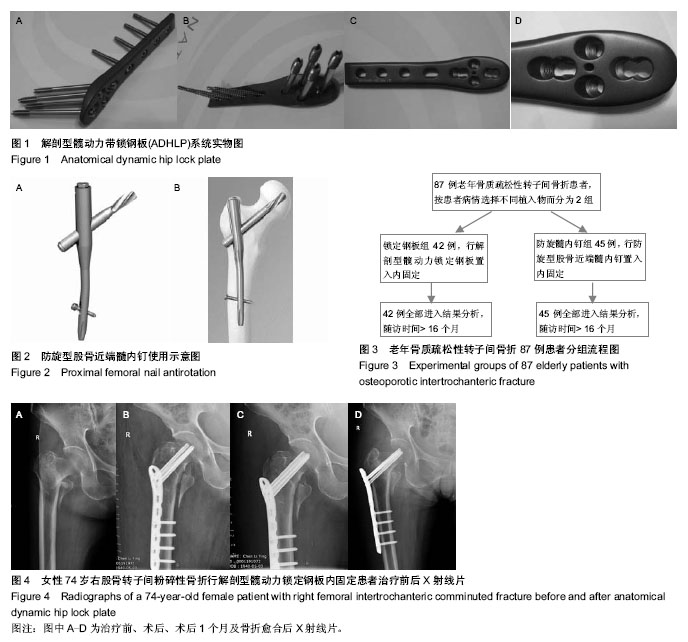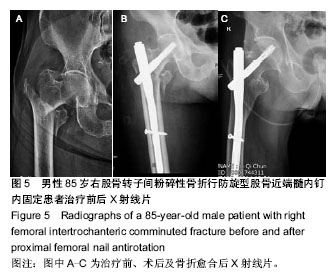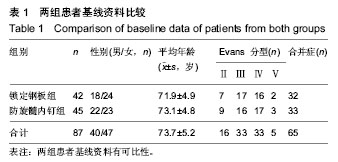中国组织工程研究 ›› 2015, Vol. 19 ›› Issue (4): 629-633.doi: 10.3969/j.issn.2095-4344.2015.04.024
• 骨科植入物 orthopedic implant • 上一篇 下一篇
解剖型髋动力锁定钢板与防旋型股骨近端髓内钉修复老年股骨转子间骨折:16个月随访评价
邵云峰1,张湘生2
- 1深圳市南山区蛇口人民医院骨科,广东省深圳市 518000;2中南大学湘雅二医院骨科,湖南省长沙市 410011
Anatomical dynamic hip lock plate and proximal femoral nail antirotation repair intertrochanteric fracture of femur in the elderly: 16-month follow-up
Shao Yun-feng1, Zhang Xiang-sheng2
- 1Department of Orthopedics, Shekou People’s Hospital of Nanshan District of Shenzhen City, Shenzhen 518000, Guangdong Province, China; 2Department of Orthopedics, Second Xiangya Hospital, Central South University, Changsha 410011, Hunan Province, China
摘要:
背景:老年股骨转子间骨折进行积极的内固定治疗已被大家认同,但具体选择何种固定方式,尚无明确标准。
目的:比较应用解剖型髋动力锁定钢板与防旋型股骨近端髓内钉两种不同内固定方式修复股骨转子间骨折的疗效,探讨内固定选择的意义。
方法:选择2009年8月至2014年4月在深圳市南山区蛇口人民医院骨科收治的老年骨质疏松性股骨转子间骨折患者87例,分别接受解剖型髋动力锁定钢板(锁定钢板组)与防旋型股骨近端髓内钉(防旋髓内钉组)内固定治疗,比较两组患者下地活动时间及负重时间、骨折愈合时间、功能恢复程度及并发症发生情况。
结果与结论:所有患者治疗后随访16-24个月,平均19个月。锁定钢板组和防旋髓内钉组患者骨折愈合时间均为11周左右,修复后2周Harris髋关节功能评分比较差异无显著性意义(P > 0.05),但防旋髓内钉组患者下地活动时间及负重时间短于锁定钢板组(P < 0.01)。有4例患者拟行防旋型股骨近端髓内钉内固定患者,因股骨转子纵裂、股骨髓腔狭小及股骨弧度较大而术中更改选择解剖型髋动力锁定钢板。随访过程中,锁定钢板组1例发生髋内翻,防旋髓内钉组1例因撞击伤再次发生骨折。结果提示两种内固定系统治疗股骨转子部骨折均可获得良好的疗效,可根据患者具体情况选择适合的修复方式和植入物。
中图分类号:



